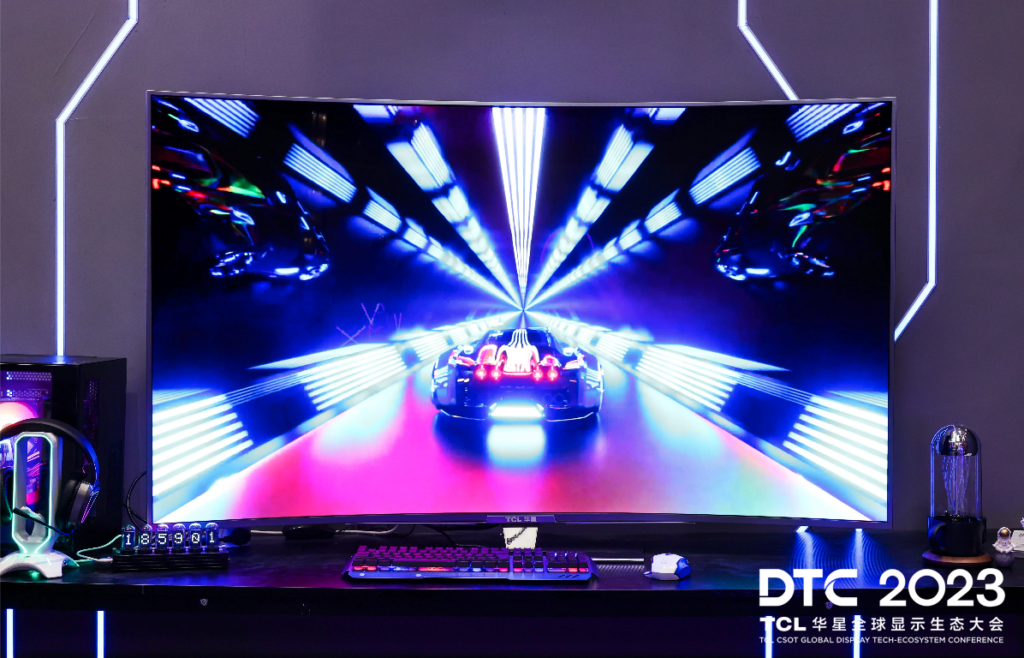Chinese display manufacturer TCL CSOT held its Global Display Tech-ecosystem Conference 2023 (DTC 2023) in Wuhan last week. The annual event brings together industry partners to discuss display technologies and future innovations.
This year, TCL CSOT introduced an AI model called X-intelligence designed specifically for the display manufacturing industry. Created in partnership with TCL research teams and AI specialists, TCL claims X-intelligence surpasses capabilities of GPT-4 specifically for the display field. The model features advanced natural language and reasoning abilities to understand display-related concepts and terminology. TCL states this will help improve efficiency and innovation in the production process.
TCL claims it can privately deploy X-intelligence to ensure data security while enabling enhanced display tech development. By leveraging AI, TCL CSOT aims to upgrade capabilities in the Chinese display industry. The specialized model is intended to boost productivity and innovation for display manufacturers through intelligent automation.
Additionally, TCL CSOT unveiled four new display products it describes as world firsts:
TCL Unveils 65-Inch 8K Printed OLED Curved Display
TCL showcased a 65-inch 8K resolution curved OLED display at the conference. The company states the display has 33 million pixels and a million-level contrast ratio for unparalleled picture quality.

The display features a 120Hz refresh rate and 135-degree wide viewing angles for an immersive viewing experience suited for gaming, movies or work.
TCL utilizes a high-resolution oxide backplane and printed OLED tech, which is simpler than current mass production processes. This increases luminescent material utilization by 90% – double that of similar tech products.
As a result, TCL claims its printed OLED process reduces blue light radiation by 50%. It maintains a 99% DCI-P3 color gamut even at low grayscale for eye protection and energy savings.
150-Inch Seamless LCD Display Using Magnetic Mini LED
TCL’s 150-inch LCD display is composed of three 86-inch units seamlessly spliced together using magnetic MiniLED strips. This modular design enables unlimited expansions for extra large formats, according to the company.

The display can intelligently switch between modes for conferences or other uses based on the scenario. TCL states the magnetic MiniLED strips simplify installation and maintenance compared to typical large screens.
The LCD uses a self-developed algorithm to calibrate chromaticity differences between the LCD and LEDs to under 3% for smooth picture transitions. It supports up to 6K resolution for high-definition image quality. Additionally, the display includes smart functions like face recognition for automated check-ins and an AI voice assistant that can transcribe meeting minutes.
2.1-Inch 1727PPI LCD Display for VR Headsets
TCL was also touting a 2.1-inch LCD with a pixel density of 1727 ppi for virtual reality (VR) head-mounted displays. This aims to eliminate the screen door effect and enhance realism.

The high pixel count results from innovations in LCD design and manufacturing. TCL claims the display also features high transmittance, fast refresh rates up to 120Hz, narrow bezels and low power use. This improves image quality and battery life – two key demands for VR devices.
To reduce motion blur, the LCD utilizes fast-response tech for sub-4ms response times. TCL states this, along with 70-120Hz refresh rates and low smear tech, greatly reduces user dizziness compared to typical VR headsets during prolonged use. The display comes in a compact and lightweight form factor with added diopter adjustment for optimal user comfort.
14-Inch 2.8K Resolution Printed OLED Laptop Display
TCL additionally unveiled a 14-inch printed hybrid OLED laptop display, representing the first application of its printed OLED tech in laptops. The company has now scaled printed OLED to TVs, monitors and laptops.

The display achieves a production-level pixel density of 240PPI and resolution of 2.8K. TCL claims it delivers 100% DCI-P3 color gamut for sharp, high-quality visuals.
It also supports an adaptive 30-120Hz variable refresh rate to prevent frame smearing in videos or games, while reducing power draw. This aims to enable smooth visuals and improved battery life during intensive computing tasks.

